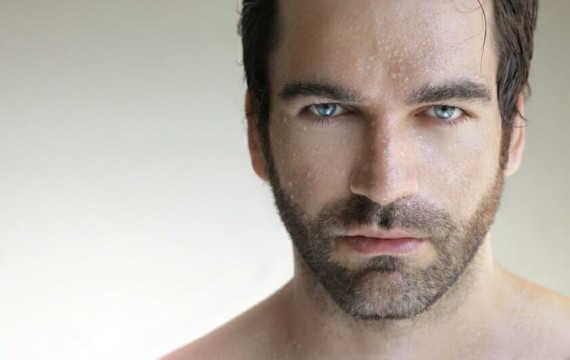In the summer of 2018, I decided that I wanted to learn how to backflip. Being 6’7 (2.01m), this seemed like an impossible task.
My internal dialogue rattled on…
“Am I too lanky to pull this off? Do my legs have to work harder to launch my giant body off of the ground? Will I land on my head and break my neck?”
I tend to be pretty stubborn, across the board. Once I had the thought of, ‘I’m just too tall to learn how to do a proper standing backflip’? I knew that I had to prove myself wrong.
So this is a tale of the time I learned how to do a standing backflip, in under three months, and what I learned about life in the process.
How I Learned To Backflip
There were multiple steps in this process, many of which I show in the video linked above. But here’s the short version.
1. I built up foundational strength
I have spent a lot of the last six years sitting. My job consists of a lot of sitting down (either to write, or to be on coaching calls). And I knew that this habit had slowly taken a toll on my body.
I knew that backflips mainly consisted of a) jumping as high as you can, and b) tucking your knees to your chest as quickly and as tightly as you can. That’s the whole move in a nutshell. And to pull this off I would need good launching power in my legs, and good tucking ability from my abs.
So I started strengthening my core, my legs, glutes, and hip flexors.
I primarily trained goblet squats, kettle bell swings, and glute bridges (for legs/glutes/hamstrings)… and bird dogs and isometric crunches (for core/abs).
Once I had a few weeks of foundational strength in my lower body, I started slowly by simply practicing doing backwards rolls, and rolling backwards over chairs.
One of the biggest blocks that I had in this process was the sheer act of flipping backwards at all. I had so much psychological resistance built up to it, and I knew that overcoming this fear would be the majority of my work.
In reality, I didn’t need to do half of the strength training I ended up doing. It was largely superfluous. I was more just doing it for the peace of mind that I was progressively building up muscle, so that I felt even 10% safer in the knowledge that I wouldn’t land on my head once I started training backflips directly.
So, with an unnecessary amount of strength built up in my glutes, I took the next step in my process.
2. I hired a dedicated coach
I grew up with a trampoline in my backyard and was totally comfortable doing front flips.
Front flips always felt safer for me because I could see the ground for the first half of the flip. I felt safe knowing that I could watch myself clearing the ground, and I knew that I wouldn’t land on my head.
In truth, backflips are actually safer and easier than front flips. Because, when you think about it, bringing your knees to your chest is a more natural movement than bringing your chest to your knees. Plus, if you do a three quarter turn on a back flip, you’ll land on your hands, knees, and feet (like a modified army crawl), whereas if you under-rotate on a front flip, you land on your back and butt. And I don’t know about you, but I feel way safer and more in control landing on all fours than I do on my back. So, again, score one for team backflip.
So, back to the story at hand… because I knew that the psychological barrier of landing a backflip was the most important part for me to work through, I hired a coach to stand by my side and walk me through the process (largely, to have someone spot me and ensure that I would be minimizing any risk of injury).
He was great. He told me from day one that my height definitely wasn’t going to make it easier for me to stick the landing, but that I could do it nonetheless.
We started by training jumping. Then training tucks. Then slowly combining the movements, with increasing levels of difficulty.
By the end of the first month I could do a backflip into a foam pit, with about a foot and a half (half a metre) of height variance.
I then felt confident I would be able to do a backflip by the end of the second month.
One thing I’ll mention is that as soon as I started training the actual backflips directly, I was amazed at how sore my abs were.
I disproportionately trained my legs/glutes/hamstrings, thinking that backflips were all about how much height you could get. But the weak spot that was highlighted for me, in training my backflip directly, was my core strength.
After my first two sessions of directly training my backflip, by abs were absolutely singing with pain. After the first one especially, my abs were sore to touch for a full two weeks afterwards.
Which both speaks to how underdeveloped my core strength was, and also how little I had previously needed to use any of the fast-twitch muscle fibres in that area of my body.
It’s an entirely different motion to use your abs to slowly sit up in bed in the morning, and a whole other thing when you are having your body go from the most stretched out position possible (the height of the jump in the backflip, with your arms stretched out overhead), and then snapping your body into a tiny little ball in order to do the backwards rotation. My abs were shocked with this new movement I had never asked them to do, and I paid the price. Without any hyperbole, I know that my abdominal muscles have never been as sore in my entire life, as they were for the first week following my first day of training backflips with my trainer.
3. I kept training until it happened
I landed my first (sloppy) backflip within two months of training them. After I had broken the psychological barrier of ‘Tall guys can’t learn to do backflips’, I was hooked. I would go and train them every week (by this time, largely without my trainer).
Within another month, I could land them on the ground consistently. And I also learned how to do wall flips (backflips, but where you start by launching yourself off of a wall). Wall flips are technically easier (because they’re closer to a three quarter rotation instead of a full 360), but I just love how they feel when you’re doing them. Whenever I do a wall flip I feel like I’m Neo in The Matrix.
What Learning How To Backflip Taught Me About Life
As with anything, high quality coaching, persistence, and a willingness to keep pushing through difficult moments paid off. And now I can backflip. I probably won’t be able to forever. I’m sure my body will get old and my joints will get rickety and whatever in a few decades, but I can now always say, that for several years of my life, I, 6’7 Jordan Gray, could do a backflip on the ground.
And whether or not that means anything to anyone but me is irrelevant. The greatest payoff I got from achieving this is overcoming a thing my mind thought was impossible.
Remember, you get to choose your beliefs.
You get to decide what is possible for you in your life.
Yes, humans are finite beings with some real restrictions, but far fewer restrictions than we tell ourselves we have.
So regardless of what limiting belief you are pushing your way through now in your life, I believe in you. I wish you all of the courage, patience, and persistence in the world.
Dedicated to your success,
Jordan
Ps. If you enjoyed this article, you will likely also love checking out:







